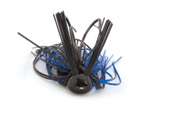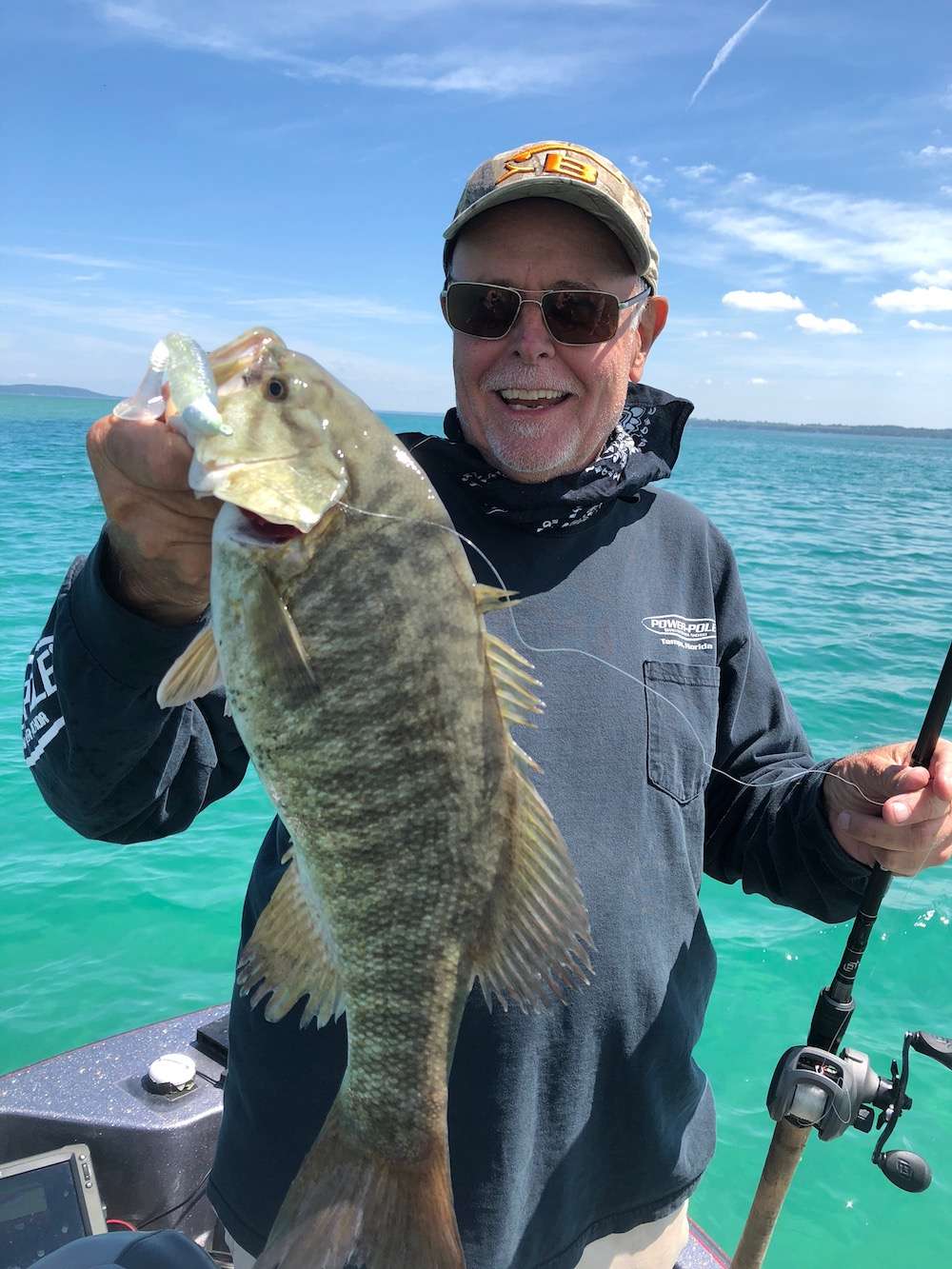
“That’s some pretty gnarly stuff down there,” Charlie Ingram said under his breath as he worked his jig-n-pig through the tangled branches of a submerged tree. He hopped the jig once when it reached open water, and instantly a fish sucked it in. The veteran Tennessee pro reacted with his trademark whip crack hook set, and his flipping stick bowed under the weight of a lunker bass. There was no swinging this fish into the boat —after it made several powerhouse runs, Ingram dropped to his knees, lipped it and hoisted it aboard. The big-bellied largemouth weighed a shade over 9 pounds.
Ingram was demonstrating the new Bass Grabber jig he designed for Snag Proof, the lure company most famous for its weedless frogs. It’s a bass jig with a monumental difference: it sports two big, bad hooks instead of the usual one.
BASS GRABBER BACKGROUND
Besides being one of the best jig fishermen on the planet, Ingram has to his credit eight Classic appearances and a total of four BASS tournament victories. Ingram is a professed tinkerer. During the many times I’ve shared a boat with him over the years, I’ve seen him assemble custom spinnerbaits and buzzbaits from boxes of components he keeps onboard his boat; glue pieces of tube baits or plastic worms together to come up with the perfect color combination; even create an entirely new genre of bass lures by sticking a feathered hook on a sliced-off section of a soft plastic jerkbait. But when he first showed me the prototype of his Bass Grabber jig, to say that I was skeptical is putting it mildly. With its menacing-looking twin upswept hooks, I was certain that Ingram’s latest foray into lure design was nothing more than a hang-up waiting to happen.
But after watching Ingram fish the Bass Grabber, and then trying it successfully myself, the genius of the radical twin-hook design became crystal clear.
“I’ve always loved to fish a jig — the fact that it gets lots of bites and catches so many big bass makes it the perfect tournament lure,” Ingram told Bassmaster. “But there are times, especially during cold fronts and when bass are being heavily pressured, when you miss a lot of fish on jigs, or have bass get off that weren’t hooked just right. Other tournament anglers I’ve discussed this with tell me the same thing— even the best jig fisherman can miss or lose up to 50 percent of his jig bites over the course of a fishing day.”
Ingram is convinced that many of these missed bites are the result of the bass hitting the jig just as it rolls over sideways while crawling across an underwater obstacle. “A standard single-hook jig wants to roll or tilt to one side when you pull it across cover, regardless of its head design,” he said. “I’ve had countless days when I’d get maybe 20 jig bites while flipping heavy cover, and have five of the fish get off because the hook didn’t stick them well enough. This always bothered me — I’d drive home from the tournament wondering how much bigger my paycheck would have been if I’d gotten those missed fish into the boat. This started me thinking about modifications I might make to my jigs that would increase my bite-catch ratio.”
Two years ago, a light bulb went off in Ingram’s brain while he was taping a segment of his popular Fishing University TV show on Lake Guntersville, Ala. “I was fishing weedless Snag Proof frogs over matted grassbeds, and the frogs’ twin-hook design triggered an idea,” he said. “I was impressed with how the lure’s double hooks stuck practically every fish that hit in that heavy grass cover. The Snag Proof frog hook is basically a large single hook that splits into two prongs, and I wondered how that same hook style would work on a jig. My cameraman, Rick Cheatham, is real handy, and I asked him to mold me a jighead around one of those frog hooks. Later, I designed a split weedguard to protect both hooks and a wire keeper between the hooks to hold a trailer.”
STEADY AS SHE GOES
Once Ingram began experimenting with the double-hook jig prototype, he was astounded by how well it came through cover. “You won’t believe it until you try it, but the Bass Grabber actually comes through cover better than a standard jig because it’s much more stable,” he claimed. “The twin hooks give the lure added stability and better balance. It falls straight down on the drop, then tracks true when crawling over rocks, stumps and logs, without rolling or tilting to one side. The split weedguard protects both hooks and allows the bait to crawl through heavy brush and grass like a champ.”
Most important, however, is how the twin-hook design sticks bass. “My bite-catch ratio is much higher with the Bass Grabber,” Ingram said. “If a bass so much as breathes on this jig, one or both of the hooks will stick it. Because it doesn’t roll over to one side, you get far fewer missed bites. I rarely miss a fish on this jig.”
FROM PROTOTYPE TO PRODUCTION
Ingram presented the twin-hook jig concept to Snag Proof and they bit down hard. According to Snag Proof’s Harry Ehlers, the lure company has been awarded a patent on the twin-hook jig application, and will have the Bass Grabber in major tackle outlets by the time you read this. The Bass Grabber comes in 3/8- and 1/2-ounce weights and features special heavy-duty Gamakatsu extra wide gap hooks, 3/0 or 4/0 depending on jig weight. Other key design features specified by Ingram include split weedguard, specially designed wire trailer keeper, toe-shaped head and premium skirt. The Bass Grabber is available in black/blue, black/red, brown/orange, green pumpkin, watermelon and white. Suggested retail price is $8.75. For additional information or to order, contact Snag Proof Manufacturing Inc. at www.greatlures.com, or call 800-762-4773.





